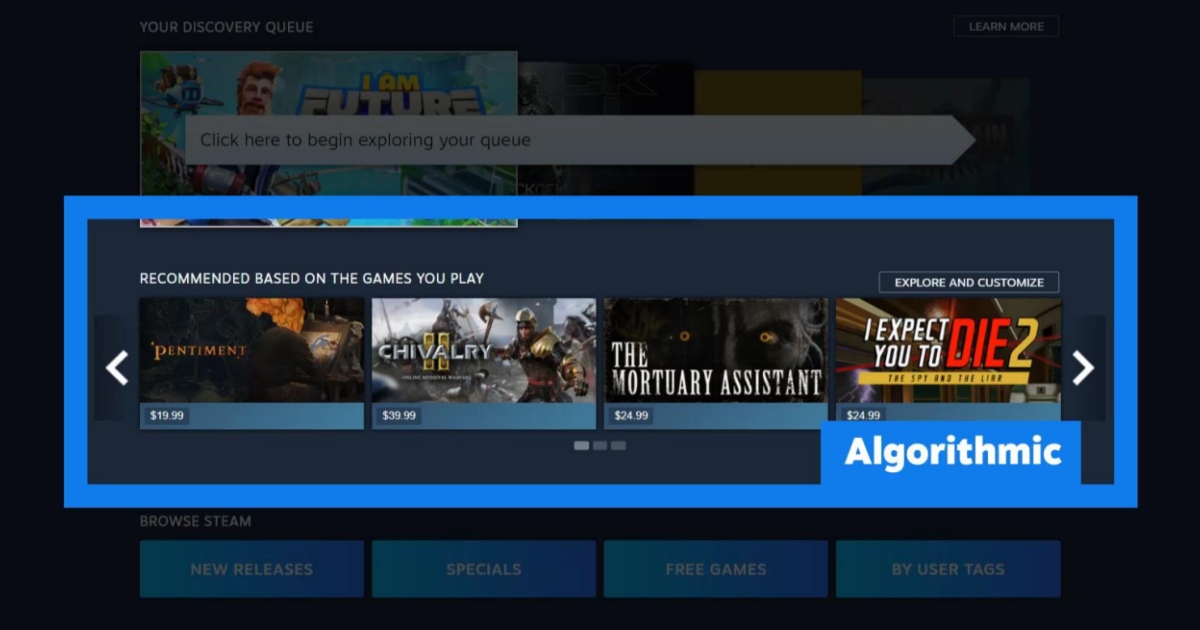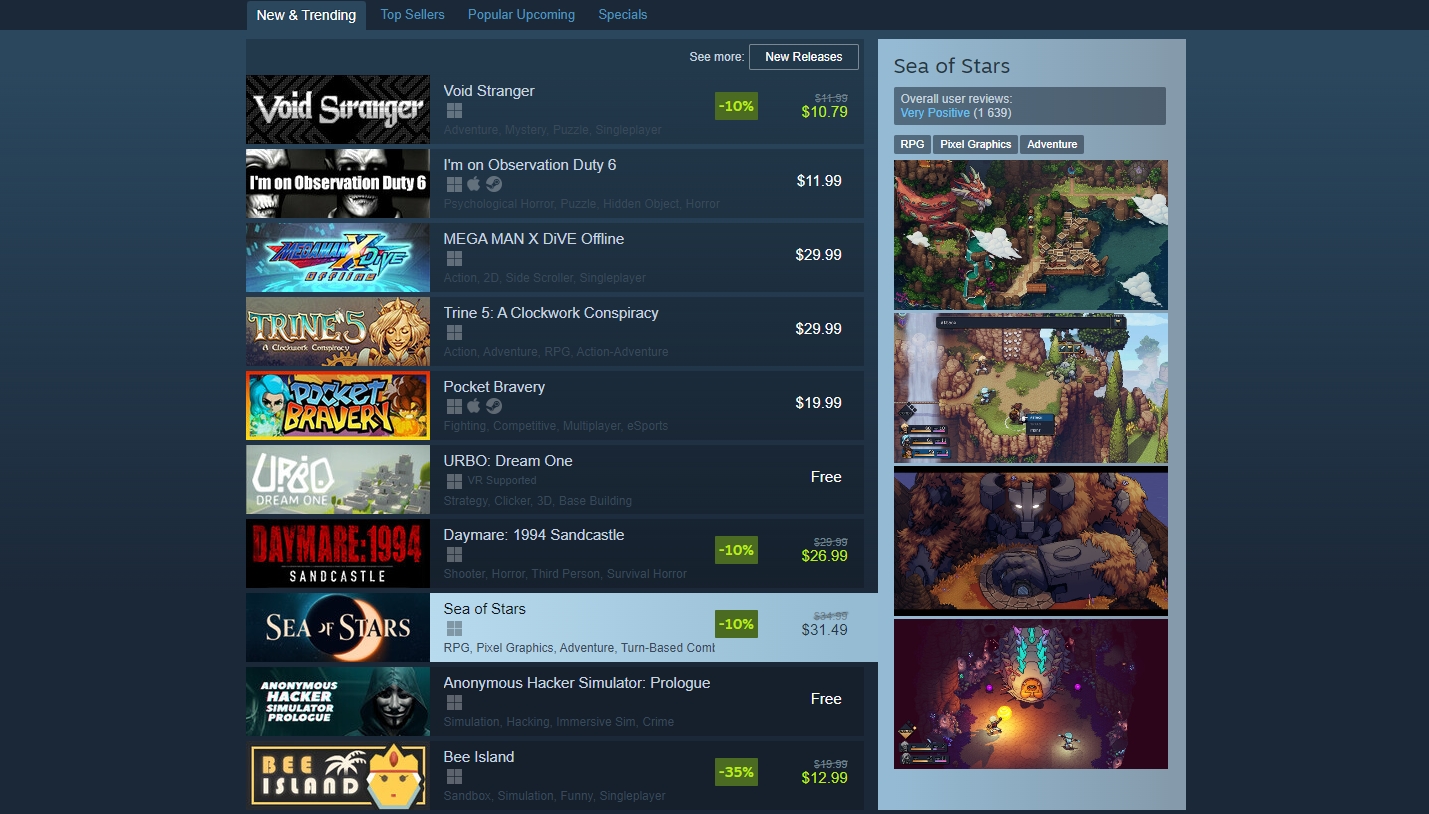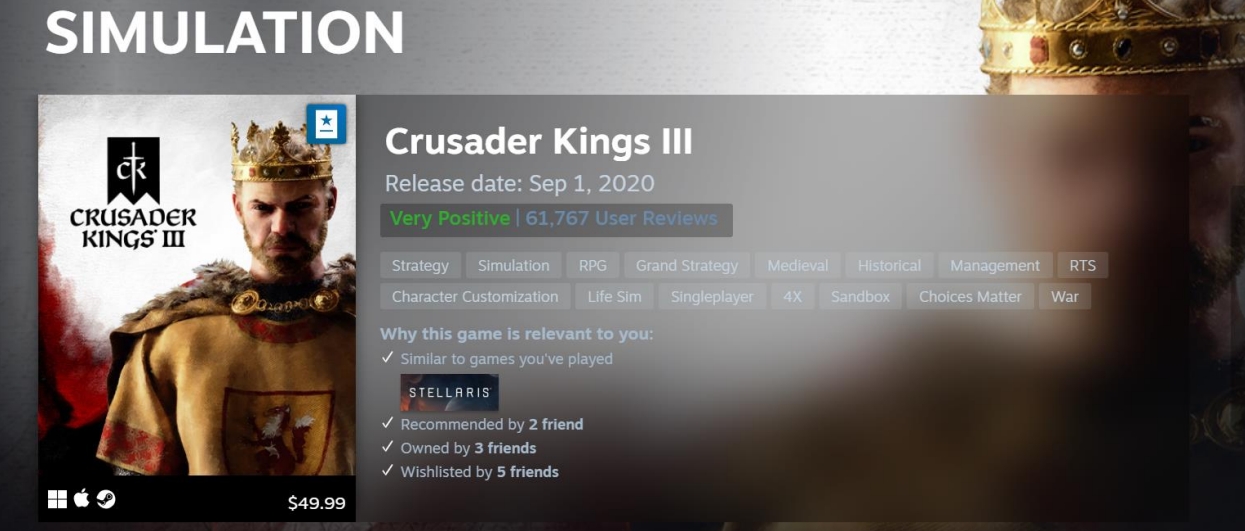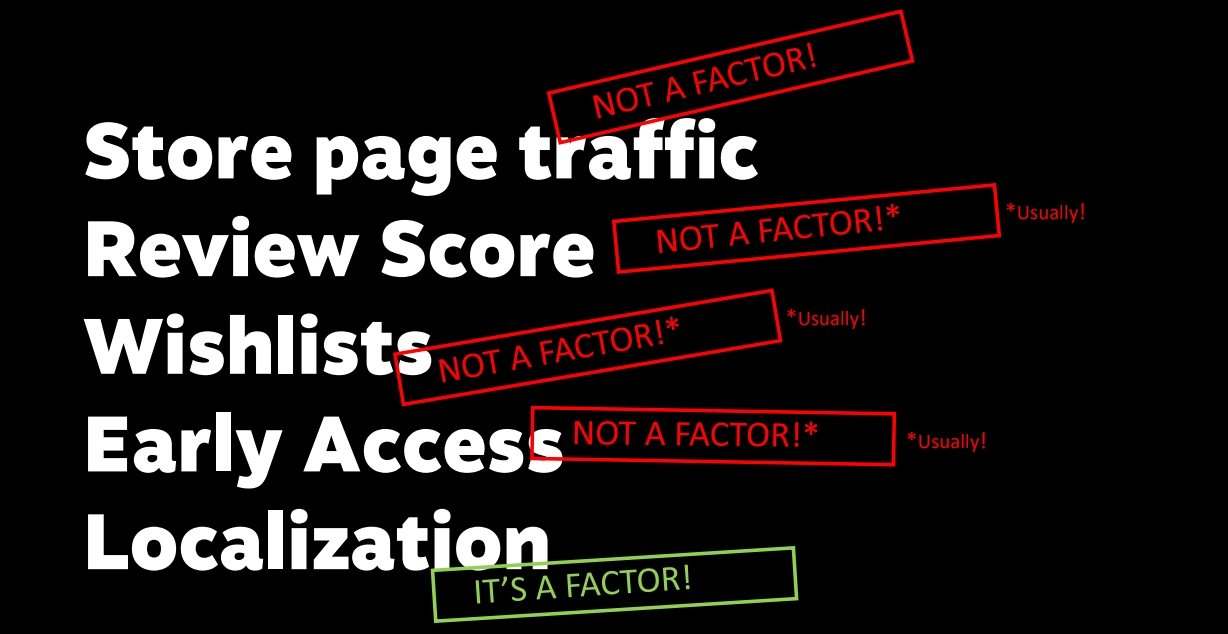Erik Peterson, responsible for business development at Valve, has shared some insights into visibility and discovery mechanisms on Steam. Here is how the company helps devs reach players and connect users to games.

Peterson spoke about this topic at the devcom Developer Conference 2023, and Valve recently shared slides from his presentation titled “Steam Visibility: How Games get surfaced to Players.” Below are the key takeaways.
What types of visibility are there on Steam?
According to Peterson, Valve’s goal is to make the games that players see on Steam relevant and interesting to them.
All the tools that can boost visibility of titles distributed on the platform are organic, because, as Peterson says, “We don’t think Steam should be pay to win.” So Valve doesn’t sell ads or placement, meaning devs can’t pay to promote their games on the store.
“Instead of predicting success, we’ve learned to follow player interest — the games they are excited to get into and play, right now,” the presentation explains.
So there are two types of visibility on Steam:
- Algorithmic (personalized) — Featured & Recommended capsule, Discovery Queue, recommendations based on games users play or publishers they know, etc.;
- Curated featuring (shown to all users) — big banner on top of the front page, Special Offers, Daily Deals, etc.

Dave the Diver banner is Curated / Featured & Recommended is Algorithmic
When it comes to algorithmic visibility tools, there is a very important section in the middle of Steam’s front page that includes four tabs:
- New & Trending (regionalized) — list of recently released games, excluding Early Access titles. Each game starts at the top after meeting a certain threshold and gradually goes down the list as newer games are released (Simon Carless recently did a detailed breakdown of the New & Trending chart);
- Top Sellers (regionalized) — list of highest-grossing products on Steam right now based on their total revenue, including DLC and in-game purchases;
- Popular Upcoming — list of the most wishlisted unreleased games, sorted by release date;
- Specials — list of the most popular discounted games, sorted by sales.

Here is what the New & Trending tab looks like in the US
Algorithms
- Valve says Steam is designed to be personalized for each user, and there is no one secret algorithm that decides which games will reach more audience.
- “We let player preferences drive the visibility to make recommendations relevant,” Peterson explains. “The more you interact with Steam, the better it gets at recommendations.”
- For example, the Main Capsule on the front page is personalized based on the games a user played or wishlisted, the games their friends are playing or have wishlisted, regional top sellers list, curators a user follows, and other factors.
- However, revenue remains the main way for Steam to measure player interest. So the more players spend both time and money on a certain game, the stronger the signal to the store’s algorithms that it could be interesting to other users.
- Here is another important point: “Steam’s algorithms react to player interest quickly and automatically, and it can happen any time during the life cycle of a game.”

Content hubs are another algorithmic visibility tool described by Valve as “mini-versions of the front page, scoped to a genre that are also personalized”
Curated featuring
- Just like algorithmic visibility, curated featuring and promotions are earned with player interest. “They are earned, and it’s competitive,” Peterson explains. “They’re also based on a mix of sales and other customer signals.”
- Not all titles receive a curated featuring at launch, but that doesn’t mean they can’t recover. “Steam never makes a permanent decision about your game,” the presentation reads. “Every game has a chance to be successful. That’s by design.”
- To increase chances of getting a curated promo, Valve encourages devs to use regional pricing, work with the community, and add localization, controller support, and other stuff that would make their game more accessible and appeal to a broad audience.

Curated featuring options on Steam
What can devs do to increase the visibility of their games on Steam?
- When it comes to algorithmic visibility drivers, store page traffic is not a factor. Even metrics like review score or number of wishlists, despite popular belief, are not critical.
- Valves says things like localization can really drive algorithms to boost the game’s visibility, but “there is no magical number to get featured by our algorithms.”

- “Steam is designed to help your game find your audience and snowball to success, but you’ll need to get the ball rolling,” Peterson explains, adding that launching a store page and just hoping for the best is “not a marketing plan.”
- So every developer should focus on generating player interest. One of the best ways to do it is building a community through social media, forums, Discord, the press and influencers, as well as using paid marketing and other channels.
- Here is another important advice: focus on big events such as launch, a major update, or discounts to “create the biggest burst of sales and players possible.”
- It is important to remember that most visibility on Steam happens automatically. As Peterson says, “We’re surprised all the time by the games that blow up.”
More details about Steam visibility and Valve’s approach to connecting players with games they will likely enjoy can be found in the full presentation.
